Social Media as User Research: Crowdtesting Your Nonprofit’s Best Messaging

Author’s Note: Recently, we used paid social ads to help a global nonprofit, Humanity & Inclusion, gain insights into their target audience. You can read the full Humanity & Inclusion case study here. But this article focuses on one key part of that campaign: How to use social media advertising to research the messaging that best engages your audience, especially potential donors or members.
Do you even need user research?
“User research” sounds much more cold and robotic than it should. Really, our users are human beings—all with their own complexities. User research is an investment in your understanding of your audiences’ psyche and needs so you can better guide them to act in a way that you want them to. Prioritizing user research within your organization goes hand-in-hand with your long-term success.
So, do you need user research?
Short answer: Probably.
Longer answer: Without a keen understanding of the people whose trust you’re trying to earn, you’re just marketing to shadows. But done well, user research gives us more than an understanding of our customers: Research creates the conditions necessary for magic to emerge.
The best messages and creative ideas usually have a little irrationality built in—some element or “spin” that doesn’t make sense on a spreadsheet, but which performs marvelously with real, messy, emotional, illogical human beings.
Finding these miracles in your marketing happens more readily when you start from a place of knowledge, when you have a sort of psychological “intimacy” with your target audiences. This intimacy starts with research.
Cracking the U.S. Market with Research
Humanity & Inclusion (H&I) is known for their tireless work helping victims of war and conflict. They provide critical medical care and prosthetic limbs for amputees and they work to clear hundreds of thousands of land mines. (This last effort helped H&I earn the Nobel Peace Prize.)
While H&I is well known and respected abroad, their brand awareness in the U.S. hovers somewhere near zilch. But H&I wanted to change that, and in 2019, as part of the Mighty Big Grant, they partnered with us to address one big question: What message would best move Americans to engage with Humanity & Inclusion?
The project budget wouldn’t permit a nationwide research project replete with surveys, focus groups, user interviews, and so on. But it would allow for a healthy amount of targeted social media advertising.
In a “bizarro” version of our normal process—in which research begets design—we inverted things. We started by designing three campaign concepts, ranging from “emotive” to “provocative.” We’d run the ads and measure which message was most engaging. Engagement in this case meant that viewers signed up for H&I emails or signed a petition. We fully expected all three ad campaigns to garner awareness and engage our audiences.
Three Unique Campaign Messages
Here are sample ads from the three messages we created:
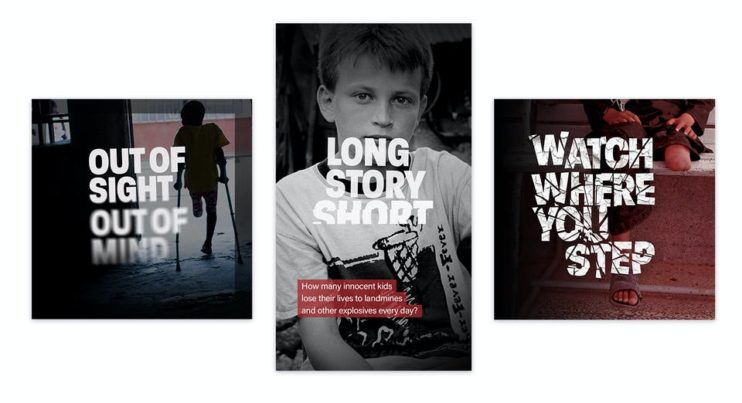
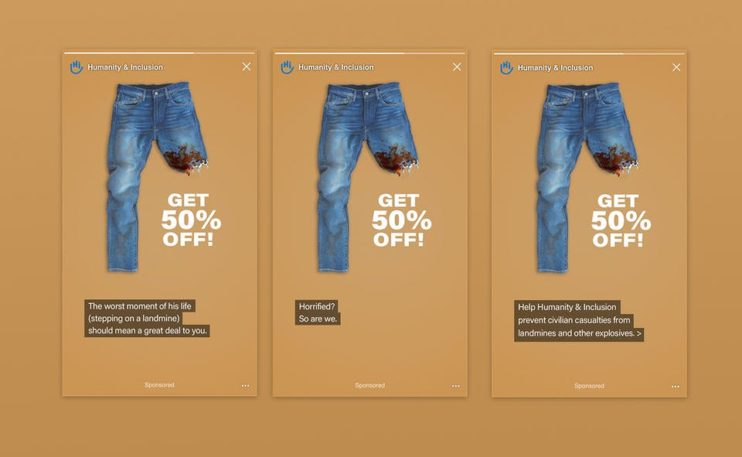
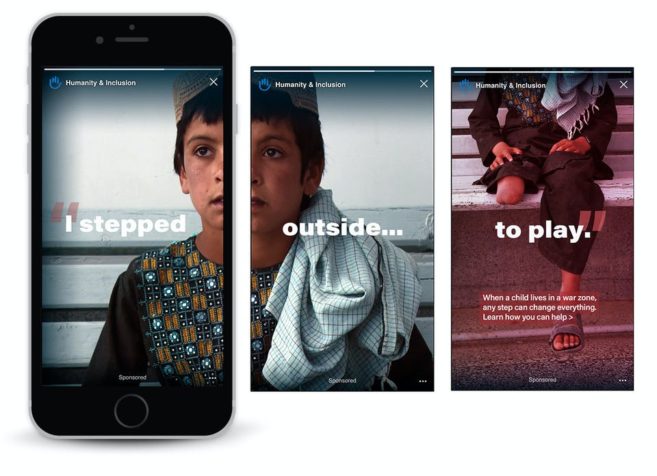
Each ad campaign ran on Facebook and Instagram for weeks and linked to a unique landing page on the H&I website. Throughout the campaign, we jumped into the numbers to see what we could learn and optimize, being as efficient with our budget as possible.
The Results
The campaign we named “Wardrobe” earned the most direct engagement: It was the most effective at raising awareness, generating buzz, and bringing in donations (bonus!).
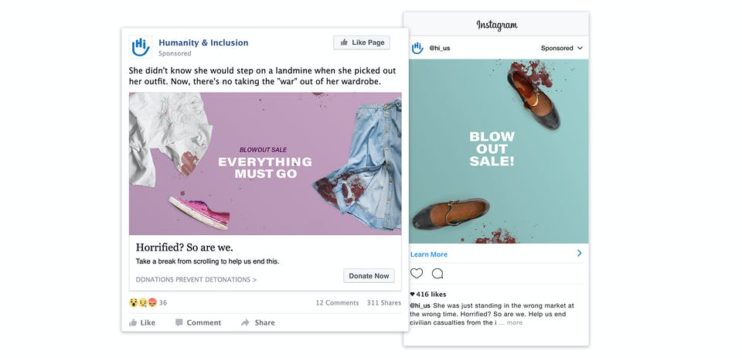
The results are clear: H&I’s audiences (and future donors) appreciate a message that is frank, stark, and visually provocative.
One viewer said about the campaign:
“I like this post. I’ve been online window shopping so much lately. Going to this site and seeing the way they presented important information in the same format as those fast fashion sites really messed with my brain and woke me up a little. Thanks.”
But a different campaign, named “Casualties of War,” convinced more people to hand over their email address to receive future messages from H&I:
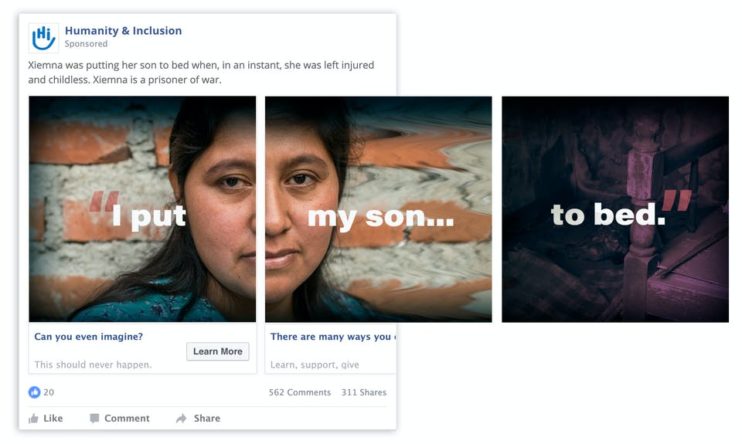
The entire 3-month campaign garnered over 800 new contacts for Humanity & Inclusion through email sign-ups and petitions. With these new contacts in hand, H&I can nurture these relationships and, eventually, ask these new audiences to fuel their mission through donations.
There’s More to Come
Our user research based on these social campaigns indicated that the Wardrobe and Casualties of War messages generated both engagement and donations. These are the messages that resonated best with H&I’s audiences, albeit in different ways.
You might think our work here is done, but as we mentioned at the top, research is not—and should not be—the end all and be all of design, communications, marketing, etc. These are creative endeavors, and it’s in the creativity where the emotional triggers live.
After presenting H&I with a complete report of the project, including both raw data for each campaign and a summary of our recommendations, H&I can take those lessons and continue to run the campaigns to generate even more awareness and, eventually, donations.
We’re proud to have played a part in helping H&I begin to crack open America’s deep and abiding sense of charity. We look forward to watching the impact they’ll have. You can read the full Mighty Citizen case study here.
